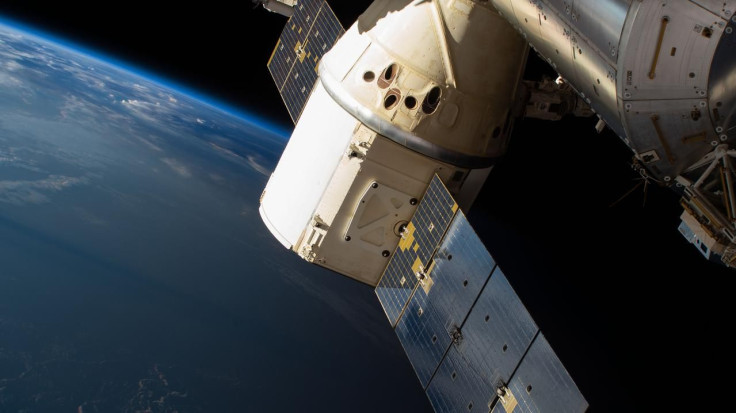SpaceX's Cargo Dragon On The Way Back To Earth
KEY POINTS
- NASA confirmed SpaceX's Cargo Dragon has undocked from the ISS
- It is expected to splash down by Monday afternoon
- It is carrying some 4,900 pounds of "valuable scientific experiments" as well as other cargo
The SpaceX Dragon is on its way back to Earth after spending about a month on the International Space Station (ISS).
"Unfavorable" weather conditions in the splashdown area pushed the departure of the Cargo Dragon's departure from the ISS to Sunday. The undocking had also been moved in the past due to inclement weather and to make way for cleanup after a spacewalk.
Now, NASA has confirmed that SpaceX's Cargo Dragon undocked from the ISS at 10.40 a.m. Sunday. The Dragon performed departure burns to get to a safe distance from the ISS, and it's set to re-enter the atmosphere by Monday. A parachute-assisted splashdown is expected off the coast of Florida by 4.05 p.m. on the same day.
Separation confirmed! Dragon is performing its departure burns to move away from the @space_station. The spacecraft will re-enter Earth's atmosphere on Monday, January 24 and splashdown off the coast of Florida at ~4:05 p.m. ET pic.twitter.com/0g52RjxViW
— SpaceX (@SpaceX) January 23, 2022
The Dragon was at the ISS for about a month after launching from NASA's Kennedy Space Center in Florida carrying over 6,500 pounds of hardware, crew supplies, research investigations and even Christmas presents for the astronauts.
On its journey back to Earth, it is also carrying some 4,900 pounds of "valuable scientific experiments" as well as other cargo. These include medical supplies as well as instruments such as the Light Microscopy Module, which arrived at the station in 2009 and is now coming home for a "well-earned retirement." European Space Agency (ESA) astronaut Matthias Maurer and NASA's Kayla Barron also loaded frozen research samples into the Dragon, while NASA astronaut Mark Vande Hei uninstalled "protein crystal samples" that were grown aboard the station and placed them inside the Cargo Dragon.
Once the Cargo Dragon splashes down back to Earth, the experiments can be quickly transported to NASA's Space Station Processing Facility at the Kennedy Space Center, NASA previously noted. This is to make sure that researchers can gather data "with minimal sample exposure to Earth's gravity."
"Investigators then can conduct more in-depth analyses back at their home labs," NASA noted.
Although the splashdown will not be broadcast live on NASA TV, people can still follow it via the updates the agency will provide on its space station blog.

© Copyright IBTimes 2025. All rights reserved.






















